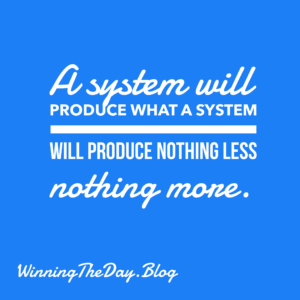In the world of real estate, we’re taught to be experts. We analyze market trends, dissect comps, and scrutinize contracts. We can tell you the absorption rate of a neighborhood on a Tuesday and debate the nuances of a new zoning law until we’re blue in the face. This is the “educated mindset” at its finest – and don’t get me wrong, it’s crucial for what we do. It’s the foundation of sound advice and professional service.
But let me ask you this: When was the last time you created something truly new in your business?
I’m not talking about a new social media post or a slightly tweaked email template. I’m talking about building something from the ground up – a new lead generation system, a unique client experience, a completely different way of thinking about your value proposition.
This is where the entrepreneurial mindset comes in, and it’s what separates the agents who simply survive from the brokers and owners who build empires.
The Analyst vs. The Architect
Think about the quote that sparked this post:
“Education teaches you to analyze. Entrepreneurship teaches you to create.”
The educated, analytical mindset is fantastic at taking things apart. It’s the part of our brain that asks:
- What did that property really sell for, and why?
- What are the potential pitfalls of this inspection report?
- What were the historical market forces that led to our current inventory shortage?
These are important questions. But an over-reliance on this way of thinking can lead to what I call “analysis paralysis.” We spend so much time dissecting what is that we never get around to building what could be.
The entrepreneurial mindset, on the other hand, is all about building and improving. It’s the voice that asks:
- How can I design a better, more streamlined client onboarding process?
- What new marketing plan can I craft to reach an underserved niche in my community?
- Instead of just complaining about the lack of affordable housing, how can I create resources or partnerships to help first-time buyers?
The trick, as the saying goes, is to keep learning, but to never lose your ability to build.
Where Analysis Ends and Creation Begins in Real Estate
In today’s rapidly changing market, the brokers, recruiters, and agents who are thriving are the ones who have embraced their inner entrepreneur. They’re not just reacting to the market; they’re actively shaping their success within it.
Consider these common industry challenges and how the two mindsets approach them:
- Low Inventory: The analytical mind studies the trend reports and laments the lack of listings. The entrepreneurial mind creates a new “How to Prepare Your Home for Sale in 12 Months” workshop to cultivate future sellers, or partners with local builders to get early access to new construction.
- Rising Interest Rates: The analytical mind explains to buyers why it’s a tough time to purchase. The entrepreneurial mind designs a “creative financing” seminar with a trusted mortgage partner or develops a marketing campaign focused on the long-term benefits of homeownership, regardless of the current rate.
- Technological Disruption: The analytical mind complains about Zillow or new AI platforms. The entrepreneurial mind asks, “How can I leverage this technology to my advantage? How can I build a personal brand and client experience so compelling that an algorithm can’t replicate it?”
Your Call to Action: Build Something Better
So, how do you cultivate this entrepreneurial spirit in your own real estate business?
- Stop Talking, Start Doing: The next time you and your team are complaining about a market challenge, pause the conversation and ask, “What is one thing we can build right now to address this?”
- Embrace “Good Enough”: Entrepreneurs know that perfection is the enemy of progress. Launch that new video series, even if the lighting isn’t perfect. Roll out that new client communication plan, even if it’s not fully automated yet. You can analyze and refine it later.
- Think Like a Founder, Not Just an Agent: Whether you’re a solo agent or a broker-owner with hundreds of agents, you are the founder of your business. This means thinking about systems, scalability, and long-term value creation, not just the next commission check.
The most successful real estate professionals are both lifelong learners and relentless builders. They have the analytical skills to understand the market and the entrepreneurial drive to create their own place within it.
Don’t let your ability to critique overshadow your power to create. Go out and build something better for your clients, your team, and your future.




